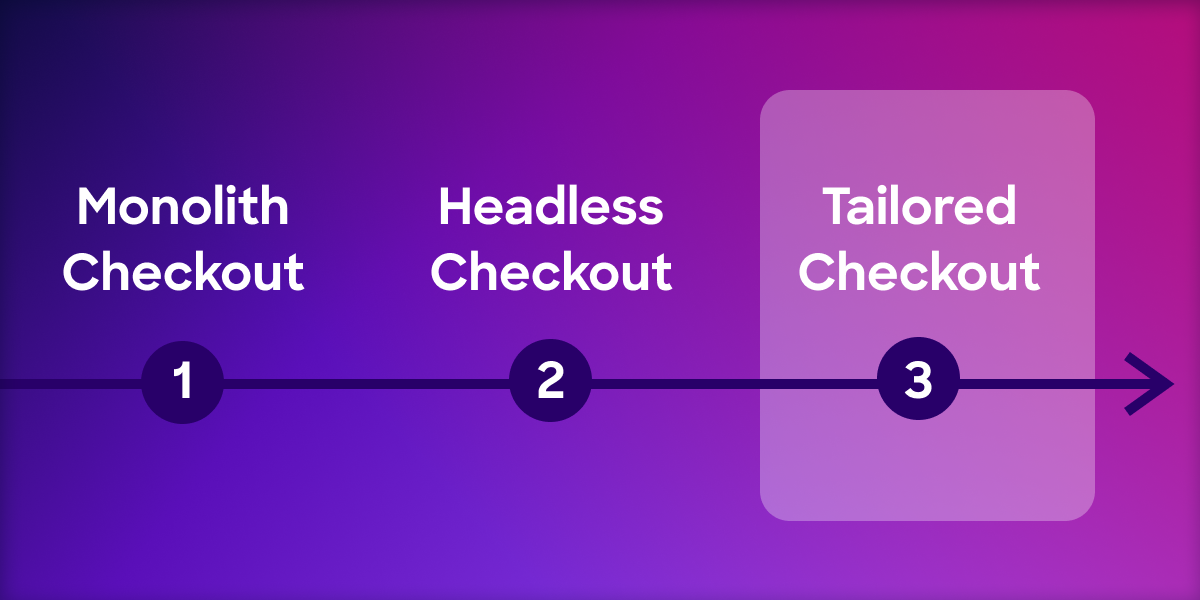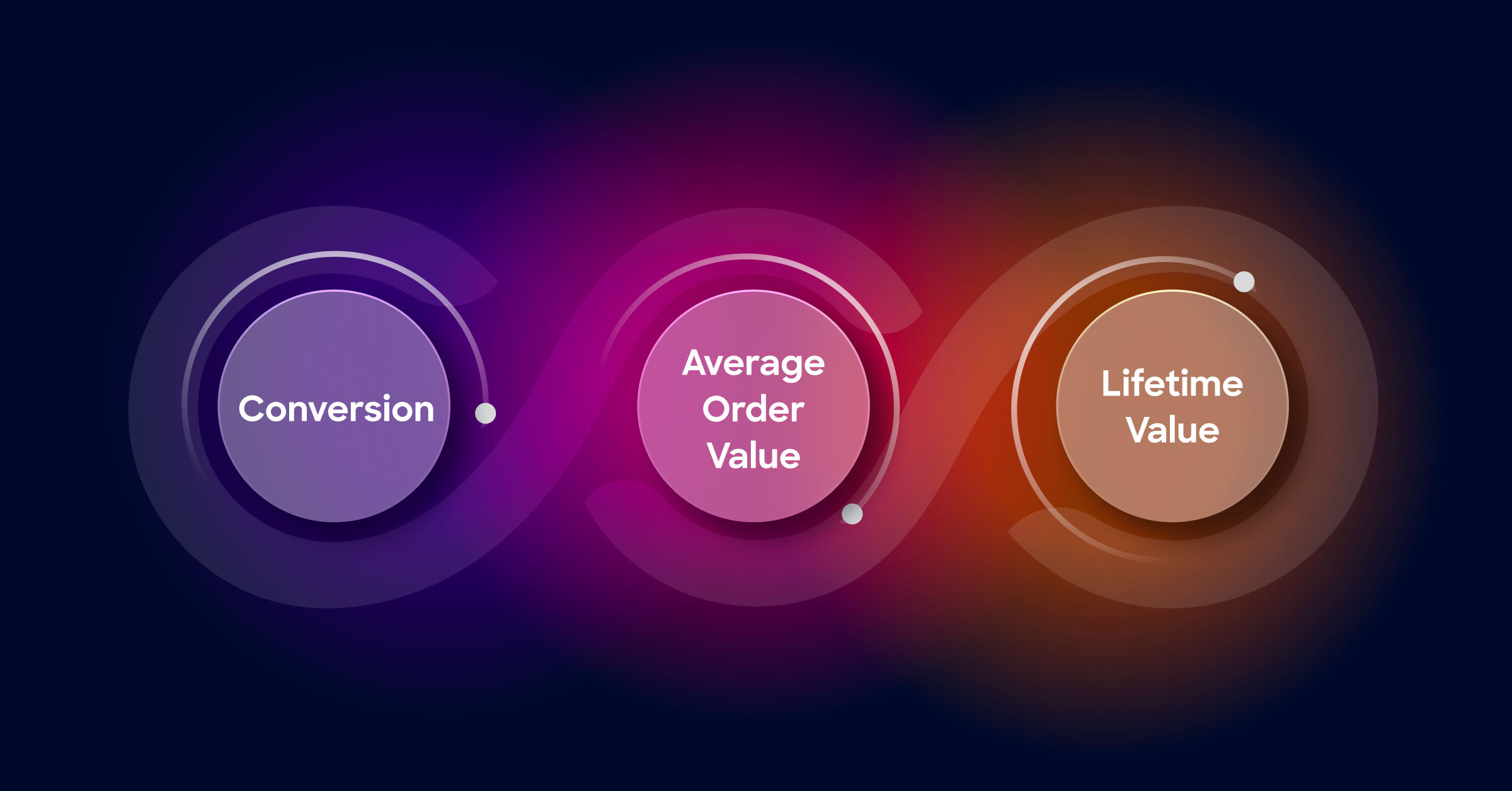For the longest time, conversions were the be-all and end-all of ecommerce metrics. In fact, many brands still beat the conversion drum as the sole measure of success.
Here at Bold, we challenge that assumption.
The checkout landscape has evolved significantly over the last 15 years. Rapid advancements in headless and composable technology allow ecommerce brands to go far beyond merely tracking conversions. Brands that optimize for conversions alone are only focusing on one small facet of their customer’s journey. Instead, brands should harness the full potential that composable technology offers by optimizing for conversions, AOV, and LTV together (also known as the Checkout Power Trio). This article explains checkout conversion, how it became the most prominent KPI, and how ecommerce brands can leverage composable commerce to look beyond conversions alone for a more holistic measure of success.
When did measuring conversions become such a big deal?
In the formative years of ecommerce, conversion became the metric du jour for good reason – commerce technology was extremely limited. Early monolithic platforms like IMB Webspehre and Oracle ATG were rigid and cost-intensive, offering little wiggle room for customization. This meant ecommerce brands often had their hands tied when it came to advanced optimizations. So, what was the easiest data point to track, analyze, and celebrate? You guessed it – conversions.
Even as commerce tech evolved into headless architecture around 2010, the focus on conversions still lingered. Though headless platforms offered more flexibility, they came with their own set of complexities, leaving many brands clinging to conversions as a simple KPI to focus on among other complex integration processes.

Why a conversion-only focus misses the mark
Thanks to composable commerce, we are now in our third generation of checkout, and the emergence of cutting-edge composable solutions means that brands can optimize across their customers' entire lifecycle, not just the moment of conversion.
While conversions remain important, focusing on them exclusively is a short-sighted strategy. Conversion is a single binary metric that only allows us to answer the question, “Did they buy?”.
Here are a few questions we should be asking (and answering) with our metrics:

Today’s customers are now buying in more places, with more unique payment methods than ever before. As digital commerce matures, it is imperative that your checkout focuses on optimizing for all three of these key metrics across your entire customer journey.
How composable checkout improves the customer journey
A recent Gartner report provides compelling support for more holistic metrics predicting that “by 2025, organizations offering a unified commerce experience by frictionlessly moving customers through journeys will see at least a 20% uplift in total revenue.”
In today’s hyper-competitive retail environment, it’s not just about one touchpoint; it’s about orchestrating a series of touchpoints that move customers smoothly from discovery to purchase and beyond. In a crowded marketplace, a checkout that’s optimized for your unique customer journey isn’t just a nice-to-have; it’s a must-have for sustained ecommerce success.
Bold leverages the Checkout Power Trio framework to focus on the relationship between three key metrics: conversion, AOV, and customer LTV to optimize for the entire customer journey.
Turning the dials to optimize for your unique customer
Not all brands will emphasize the same mix of metrics; deciding which metrics are most important should be dependent on your customer’s specific profile. This includes factors such as loyalty programs, current behavior (browsing, searching for specific products), and the channel they are using (mobile, desktop, retail).

The magic really happens when you start to dynamically adjust these dials based on real-time customer behavior and historical data. Imagine a checkout experience that is so tailored, it adapts to whether the customer is a first-time, or a repeat buyer, and considers what they’re currently browsing, or which device they’re using.
With the power of a composable checkout at your fingertips, you’re free to create a tailored experience for each of these customer journeys. With this level of customization, you can optimize for AOV when a customer shows high engagement levels, focus on conversions when they are at a critical decision-making point, or even target customer lifetime value by offering loyalty perks or upsells that align with their past behavior.
Tailored checkout flows: your key to the highest performing checkout
As you’ve seen above, the key to capturing more revenue with your checkout lies in creating a dynamic, responsive checkout that evolves with your customer, amplifying the impact of each optimization you make.
Ready to get a leg up on the competition by optimizing for the entire customer journey?
Click here to download the Checkout Blueprint, a comprehensive guide on transforming your checkout from a carved in stone “never touch it” static page to a powerful revenue-generating engine.
Get the knowledge and inspiration you need to grow your business.
Bold Commerce needs your email to send newsletters. For more information, read our Privacy Statement.